【Static Program Analysis - Chapter 3】Type Analysis
類型分析,個人理解就是(通過靜態分析技術)分析出代碼中,哪些地方只能是某種或某幾種數據類型,這是一種約束。
?
例如,給定一個程序:
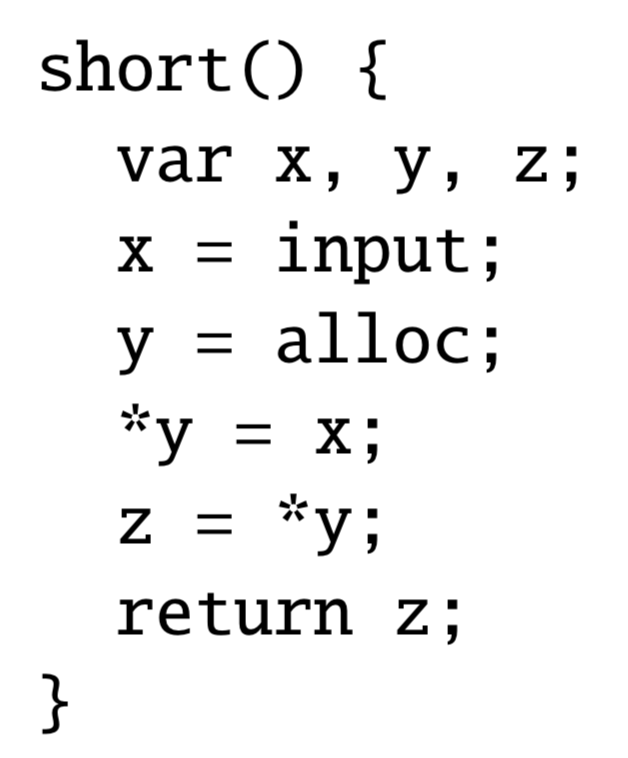
其中,我們可以很直接地得到一些約束:
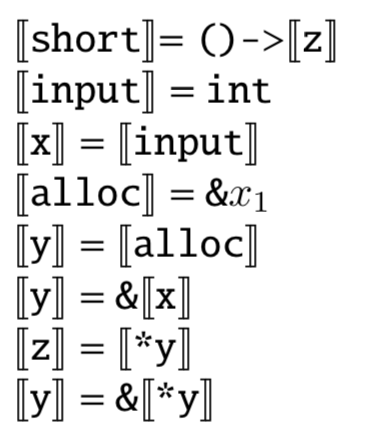
最後,經過簡化可以得到:
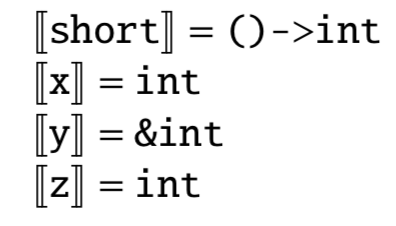
對於給定的變量類型,如果他們不符合這個約束,則說明,他們是不合法的。
那麽,怎麽去提取以及維護這些約束呢?
采用一種“並查集”的結構:一個有向圖,每個節點有一條邊指向父節點(父節點則指向自己)。如果兩個節點具有相同的父節點,那麽,這個兩節點就認為是等價的,即含有相同的數據類型。
以下是並查集的基本算法:
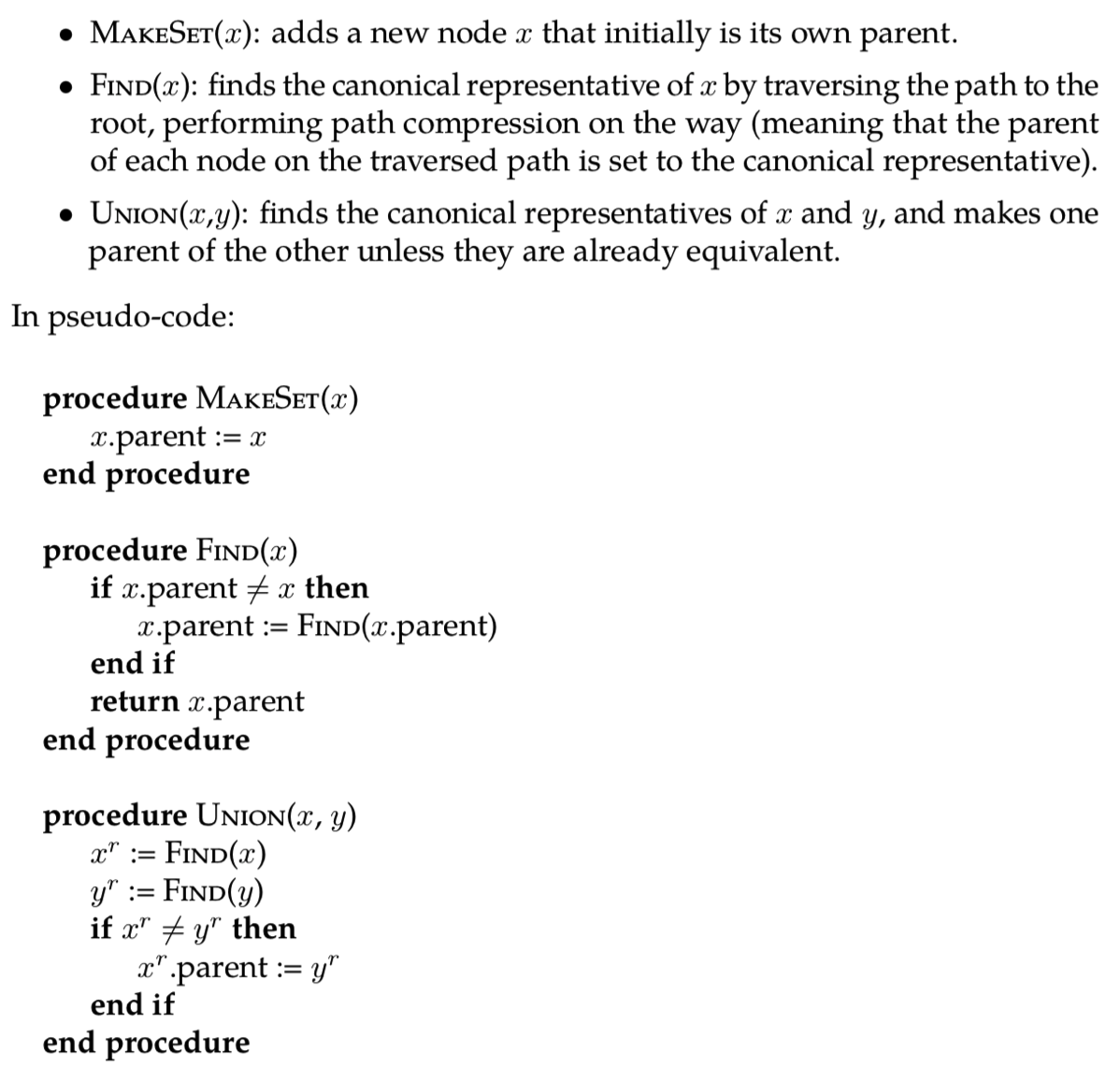
The unification algorithm uses union-find by associating a node with each term (including sub-terms) in the constraint system.
For each term τ we initially invoke MakeSet(τ ).
Note that each term at this point is either a type variable or a proper type (i.e. integer, heap pointer, or function); μ terms are only produced for presenting solutions to constraints, as explained below.
For each constraint τ1 = τ2 we invoke Unify(
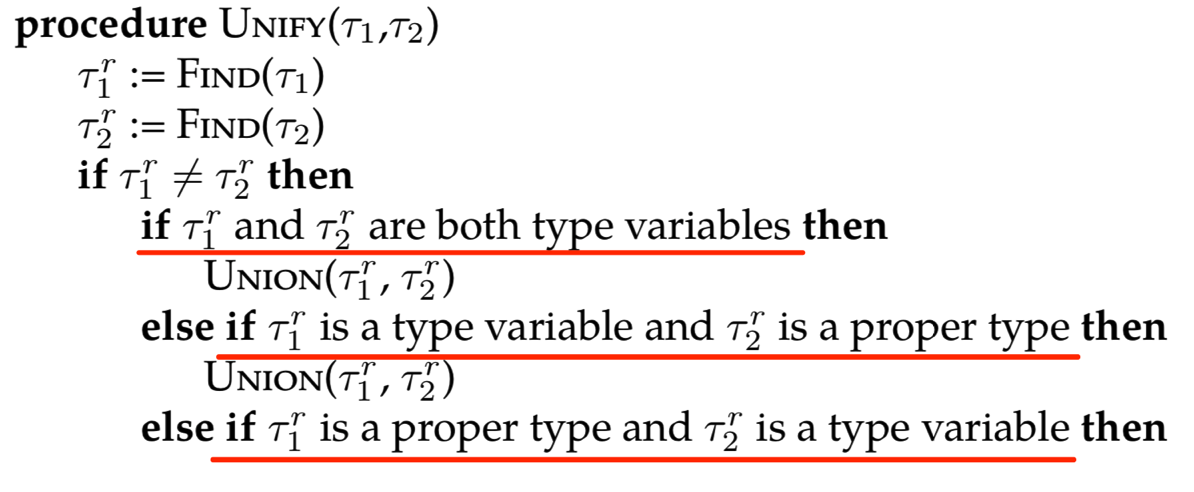
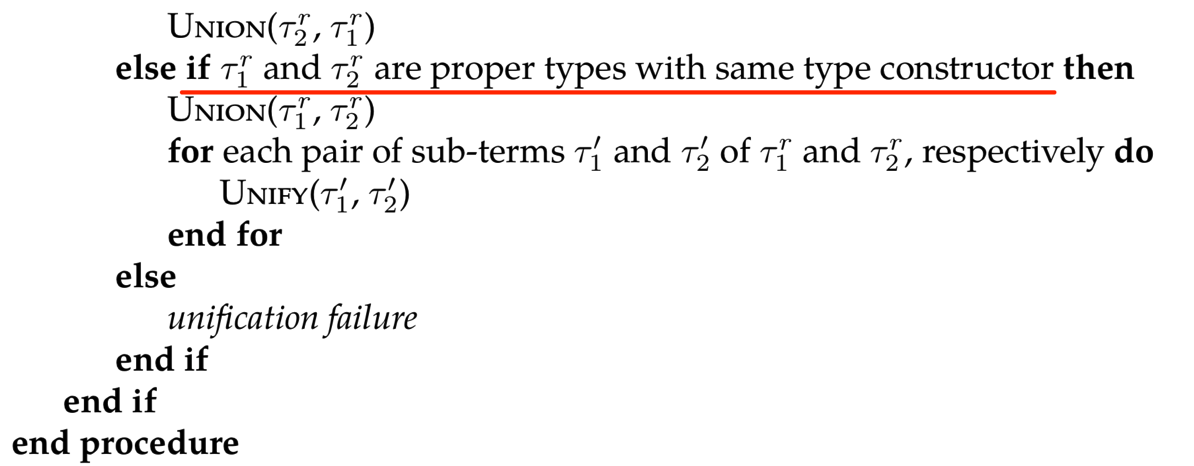
Unification fails if attempting to unify two terms with different constructor (where function constructors are considered different if they have different arity).?
再來看個例子:

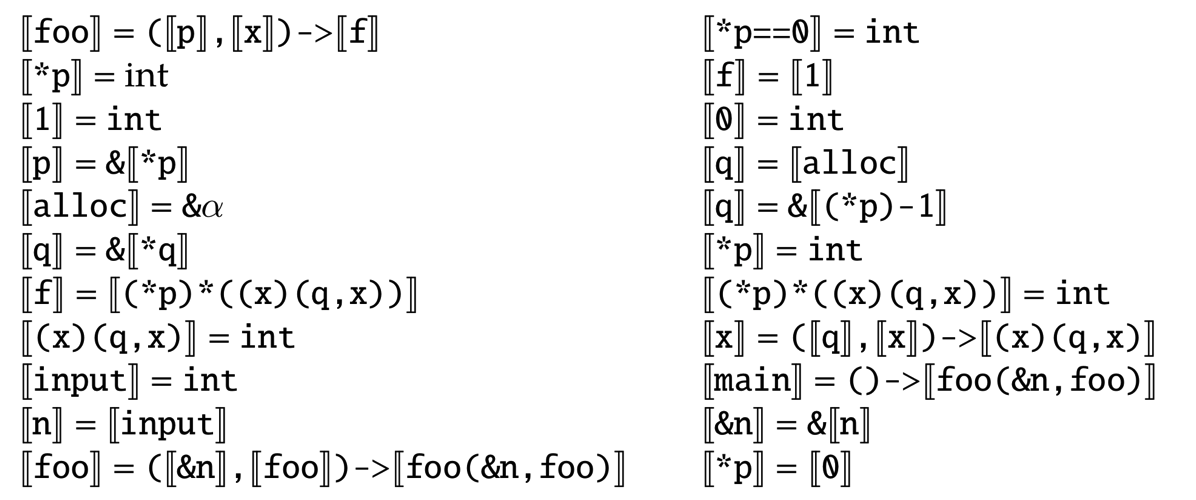

對於遞歸:
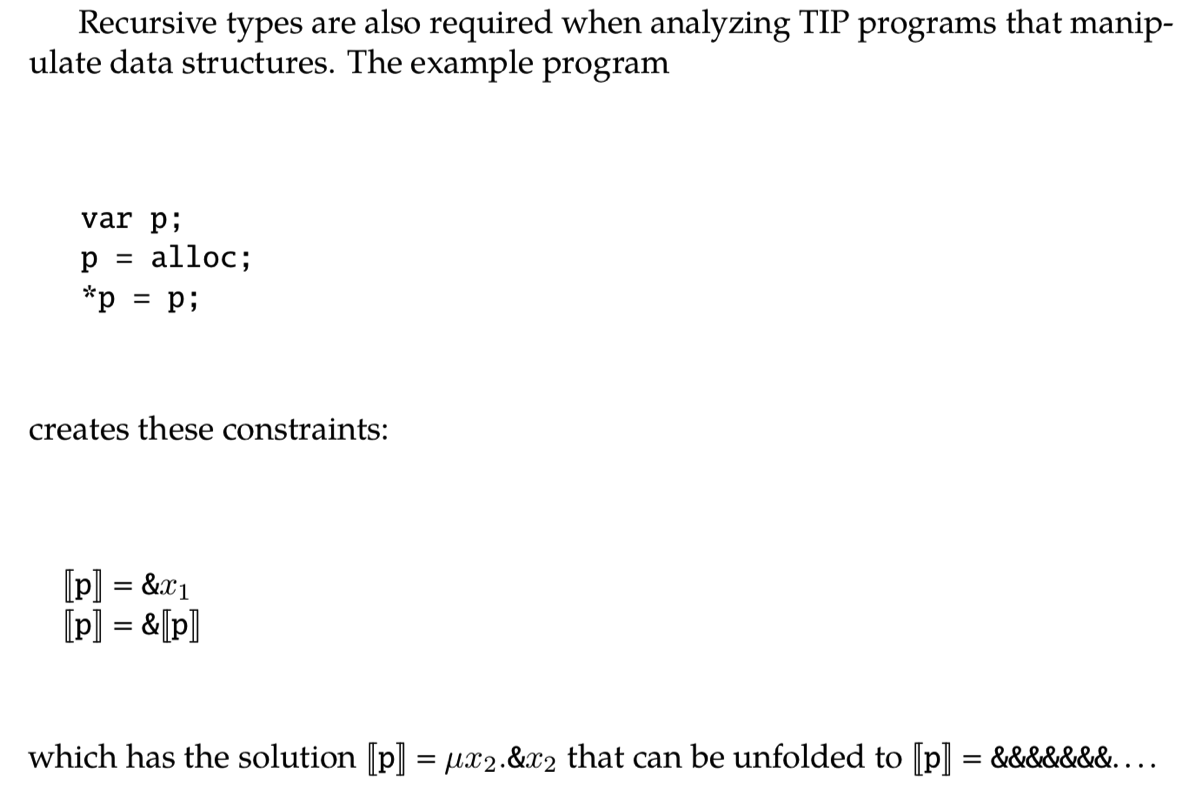
Limitations of the Type Analysis?
例子:
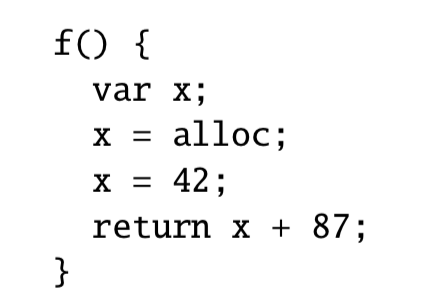 ?
?
運行的時候沒問題,但是,遵循之前的方法會報錯,之前的方法並不考慮程序的順序執行給數據類型轉換的影響。即X=42在X=alloc之後,因此,最終返回的一定是int型。
另一個例子:
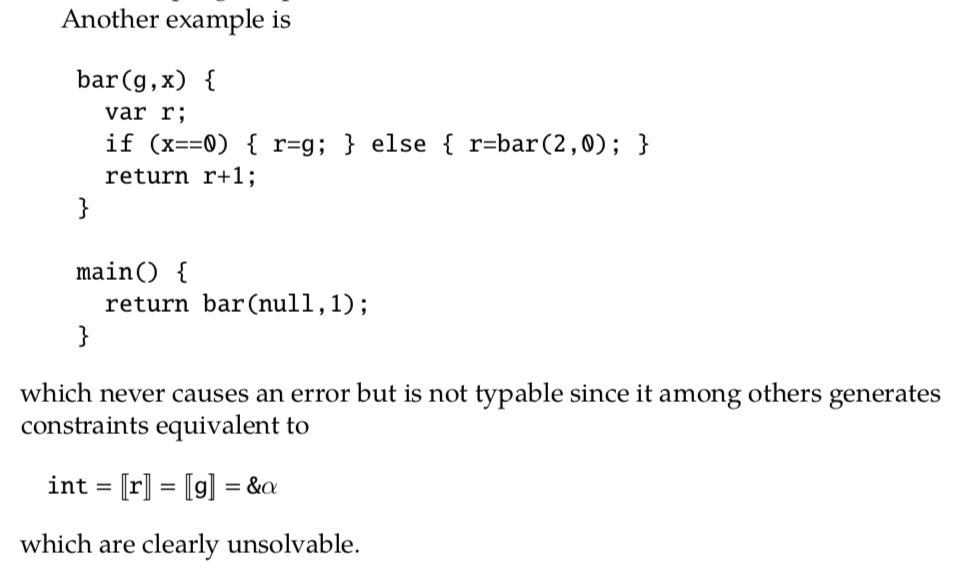
【Static Program Analysis - Chapter 3】Type Analysis
